
23 Nov Preventing Wood Rot: Big Island Home Inspection Guide
Living in Hilo, the persistent dampness can be an insidious enemy to the structural integrity of your home, with wood rot and moisture damage being silent invaders. As a homeowner, you’re likely aware that neglecting these issues can compromise not only your comfort but also your safety and the value of your property. This comprehensive guide, grounded in my dual expertise as a handyman and home inspector, is crafted to empower you with practical strategies to safeguard your home against these pervasive threats. We’ll delve into recognizing early signs of wood rot, implementing effective preventative measures tailored to Hilo’s unique climate, and recognizing when it’s time to call in a professional for a thorough home inspection. Benefit from my experience by learning how to collaborate with specialized services like plumbing, roof maintenance, and termite control, which are vital in the fight against decay,—all while keeping your insurance considerations in check. Protecting your investment starts here; grasp the knowledge and take proactive steps to keep your home robust against moisture-related perils.
Key Takeaways
- Regular home inspections in Hilo are crucial to detecting early wood rot
- Waterproofing and proper ventilation are key in preventing moisture damage
- Proactive maintenance saves on costly repairs due to wood decay
- Choosing moisture-resistant materials helps protect Hawaii homes
- A qualified home inspector offers tailored advice for Hilo’s climate challenges
Understanding Wood Rot and Moisture Damage in Hilo's Climate
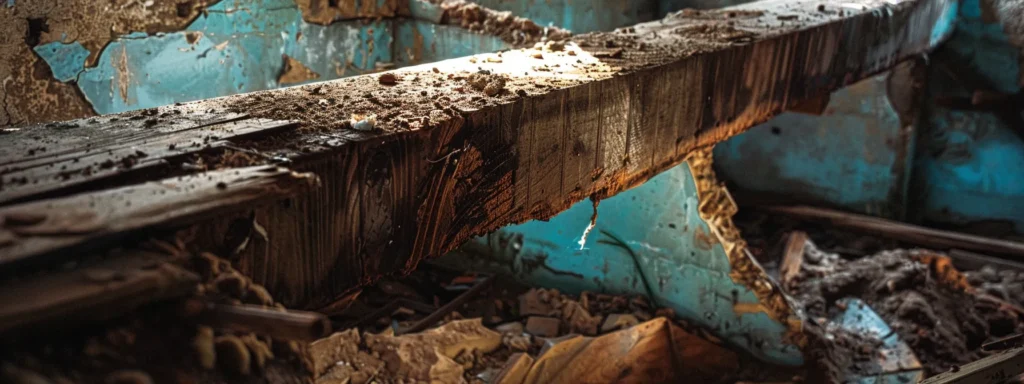
As a professional home inspector and handyman serving Hawaii, I’ve seen firsthand how the warm, damp climate of Hilo can severely affect wood structures. Humidity and constant rain contribute to common wood rot in our homes, and without proper intervention, fungi and pests can compromise wood integrity. My observations point to certain areas in your home that are most susceptible to moisture damage. Understanding these challenges is crucial for Big Island homeowners, especially when considering the specifics of local real estate, heat variations, regular inspection needs, and the role of air conditioning in maintaining a healthy home environment.
How Humidity and Rain Affect Wood Structures
In my role as an inspector of residences throughout Hilo, I’ve closely studied how structures here suffer from the onslaught of humidity and rain. Moisture easily infiltrates wood, leading to swelling, warping, and ultimately, the colonization by destructive mold. This is a pressing concern for anyone involved in real estate or construction in the area. As wood absorbs water from the humid air or rainfall, it provides a fertile breeding ground for fungi, which flourish in our lush, tropical climate and begin to slowly decompose the timber in places like the attic or other less ventilated areas.
To counteract this, consistent vigilance is key. In my experience, the most effective strategy includes regular inspections focused on high-risk areas. For instance, attics can be hotspots for mold growth due to poor ventilation and trapped moisture; a problem I highlight in reports to homeowners and fellow real estate professionals. Proactive measures such as ensuring adequate airflow, installing dehumidifiers, and applying water-resistant coatings can provide solid construction safeguards:
| Area | Issue | Solution |
|---|---|---|
| Attic | Mold | Improved ventilation, dehumidifiers |
| Exterior Walls | Swelling/Warping | Water-resistant coatings, regular inspections |
| Wooden Decks | Fungi | Sealants, frequent maintenance |
Common Types of Wood Rot Found in Hawaii Homes
In my extensive experience dealing with homes on the Big Island, brown rot and white rot are the most prevalent types of wood rot plaguing Hawaii properties. Property owners should be particularly cautious of brown rot, which weakens wood by breaking down cellulose, leaving behind a brittle, brown residue; this condition often goes unnoticed until significant structural damage has occurred. In addition to inspecting for visual cues, I regularly advise clients to implement preventative measures like effective water heating systems that reduce ambient moisture, thereby protecting their homes and investment against such insidious wood damage.
Turning to the hidden threat of white rot, I’ve observed its tendency to affect both indoor and outdoor wooden structures in Oahu and surrounding regions. White rot attacks the lignin in wood, leading to a fibrous and spongy texture with a whitish appearance. Through my hands-on inspections, I encourage homeowners to be vigilant about regular maintenance, act swiftly at the first signs of dampness, and consider radon testing, as elevated moisture levels can also increase the risk of radon accumulation – a lesser-known but important aspect of home health and safety to consider in our island’s unique climate.
Areas in Your Home Most Vulnerable to Moisture Damage
In my professional practice as a home inspector, I’ve identified that the bathroom and kitchen areas, with their heavy reliance on water, are the most at-risk zones for wood rot and moisture damage in Hilo homes. Estate agents should alert potential buyers to the importance of checking for proper sealing around fixtures and the presence of effective ventilation systems. These checks are especially important when assessing properties such as condominiums in Honolulu, where space constraints can increase the risk of damage due to poor airflow.
Additionally, in dealing with a wide array of residential and commercial property inspections, I’ve noted that spaces housing electricity systems like breaker boxes and HVAC units can be moisture magnets if not properly insulated. As a preventative action, it is crucial for property owners to ensure that these areas are well-protected from the invasive humid climate of Hilo, which can lead to costly repairs if wood rot is left unaddressed. Practical vigilance, combined with professional expertise, can significantly mitigate these risks.
The Impact of Fungi and Pests on Wood Integrity
Through the lens of Ash the Home Inspector LLC, I’ve witnessed the destructive interplay between fungi and pests on the integrity of wood structures in Hilo’s homes. Time and again, I’ve seen properties fall prey to these silent destroyers, leading to expensive repair jobs. As I collaborate with the American Society of Home Inspectors, I emphasize to my customers the critical need to schedule regular check-ups for signs of decay or infestation, especially in older constructions where hidden asbestos may also pose a risk.
As I navigate Hilo’s diverse properties, addressing wood integrity is a definitive part of the service I provide. Each homeowner encounter reminds me of the profound impact that a meticulously executed inspection can have. To this end, safeguarding your home from fungi and pests not only demands professional oversight but also a trained eye for identifying early warning signs – an expertise I offer to my clientele with unwavering focus on quality and assurances for their peace of mind.
Challenges Specific to Big Island Homeowners
In my extensive experience serving Big Island homeowners, the integration of cooling systems is often overlooked as a strategic defense against wood rot. Clients consistently face the challenge of balancing the energy costs of running dehumidifiers or air conditioners with the need to protect their homes from moisture damage. It’s wise for home buyers to consider the efficiency of a property’s cooling and plumbing systems, as these can significantly influence long-term maintenance needs and overall price.
Another pressing challenge I frequently encounter relates to the scheduling of maintenance checks and inspections. Many residents delay necessary inspections due to busy schedules or the misconception that new constructions are immune to issues. I recommend homeowners and property managers to schedule online appointments with a qualified home inspector promptly. This proactive approach can often circumvent costly repairs and preserve the value of their investment in Hilo’s unique climatic conditions.
Hilo’s tropical climate harbors a quiet enemy: moisture. Stay vigilant; let’s examine the telltale marks that wood rot has infiltrated your home.
Identifying Signs of Wood Rot in Your Big Island Home
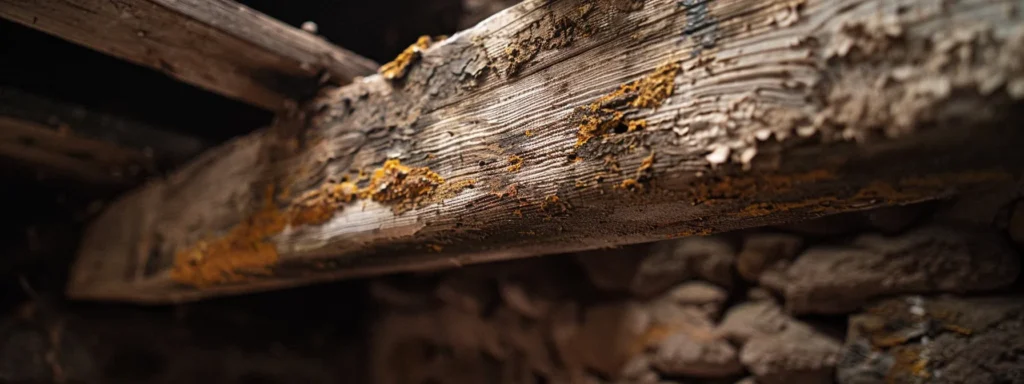
Recognizing the early signs of wood rot is a vital skill I impart to my clients, whether they’re navigating a real estate transaction or seeking to maintain indoor air quality. Visual clues can indicate wood decay; spotting mildew, for instance, might signal deeper issues. Simple methods exist to test for damage, and detecting hidden moisture is crucial. Often, in my experience, homeowners may overlook such issues. Consulting with a home inspector in Hilo can offer peace of mind, and the benefits of early detection far outweigh the costs. My knowledge in the building industry supports the pursuit of a durable, healthy home.
Visual Clues Indicating Wood Decay
In conducting countless commercial inspections across Hilo, I’ve learned the unmistakable signs of wood decay that property owners must be alert to. Discoloration and softening of wood surfaces are telltale indicators, often accompanied by a musty smell that suggests the presence of moisture and potential rot. Spotting these visual clues early allows for prompt measures, like improving drainage or waterproofing, to prevent further damage from water infiltration.
During my time as a home inspection professional in the United States, I’ve seen how seemingly minor signs like paint bubbling or flaking can reveal underlying issues with wood decay. It’s imperative to understand that where water pools, rot inevitably follows. Homeowners should be vigilant and investigate any irregularity in wood textures or structures, which could be the precursor to severe rot, crucially affecting the integrity and safety of their property.
Simple Methods to Test Wood for Damage
During my inspections, I employ a straightforward tactile approach: pressing lightly on wood surfaces to test their resilience. An area that yields easily or feels spongy is a potential red flag–it may indicate a leak’s lingering effects, jeopardizing not just the structure but also necessitating a comprehensive evaluation for further unseen damage. As part of this practice, I advise incorporating these simple checks into regular home maintenance to catch problems early and reduce liability insurance claims.
Another method I apply in detecting wood damage hinges on the assessment of proper ventilation within key areas such as attics and near chimney bases. A lack of airflow can trap moisture and cause wood components to deteriorate unnoticed. During my evaluations, if I uncover ventilation issues, I strongly recommend professional intervention to establish robust systems that mitigate rot risks, ensuring long-term protection for the property and peace of mind for the homeowner.
Detecting Hidden Moisture Problems
During my numerous assessments of Hilo homes, I’ve discovered that hidden moisture problems often lurk behind bathroom walls or beneath floors. These clandestine issues can ultimately lead to structural damage if not identified and resolved promptly. To bolster homeowner confidence and safeguard against these hidden threats, I’ve obtained certification in the detection and management of moisture intrusion, a skill set I diligently apply to every inspection.
One particularly stealthy concern in older homes is the presence of deteriorating lead paint, which when coupled with moisture, creates a compounded risk for residents. Tackling this issue head-on, I ensure that lead-safe practices are adhered to during inspections, an essential measure designed to protect the well-being of the home’s occupants and give peace of mind. My experience in identifying such risks allows homeowners to address problems with precision and certainty:
- Thorough inspection of bathroom areas to detect any hidden water damage.
- Employment of advanced tools to measure moisture levels behind walls and under floors.
- Recommendations for remediation that prioritize safety, particularly in homes with lead-based paint.
- Professional referrals for lead abatement services if necessary, to ensure the complete well-being of the property.
When to Consult a Home Inspector in Hilo
Engaging a licensed home inspector in Hilo is advisable not only during real estate transactions but also as a regular part of home maintenance. For example, if you notice unusual stains on your ceiling or smoke odors that indicate potential moisture intrusion near electrical wiring, it’s time to call a professional. As someone who frequently examines the hidden crevices of basements and the unseen spans above ceilings, my intention is to ensure your home remains secure, shielding you from unforeseen repairs and maintaining structural integrity.
Consider scheduling an inspection if you’ve never had your home’s susceptibility to wood rot assessed, or if it’s been over a year. With the investment in Hilo real estate being substantial, a routine inspection by a home inspector with a keen eye for detail can help pinpoint moisture ingress around electrical wiring and other less obvious areas, providing peace of mind and catching potential hazards early on. My practice is built on protecting homeowners’ safety and property value through thorough inspections:
- Comprehensive evaluation of basements and crawl spaces for signs of dampness.
- Inspection of ceiling spaces, focusing on areas around any smoke detectors, light fixtures, and attic hatches where moisture may accumulate unnoticed.
- Detailed look at electrical wiring routes and enclosures to identify any potential corrosion or damage from humidity.
The Benefits of Early Detection
From my extensive experience, the advantage of identifying signs of wood rot early cannot be overstated. Detecting moisture issues promptly is crucial since delayed intervention often results in costly repairs that surpass the initial payment for remediation. By adhering to building code standards and conducting timely inspections, homeowners can preemptively address any hazard and preserve the aesthetic appeal of their paint and finishes.
Additionally, the benefits of early detection extend to the homeowner’s health and safety, as wood rot can create dangerous structural weaknesses in a property. My professional insights advocate for a proactive approach; addressing problems when they first arise ensures that your home remains a safe haven free from the threats posed by unchecked moisture and decay. It’s an investment in both the longevity of your property and the well-being of those who reside within it.
Wood rot is the enemy of many island homes. Next, let’s arm you with ways to keep your sanctuary dry and robust against the relentless Hilo moisture.
Strategies to Prevent Moisture Damage in Hilo Homes
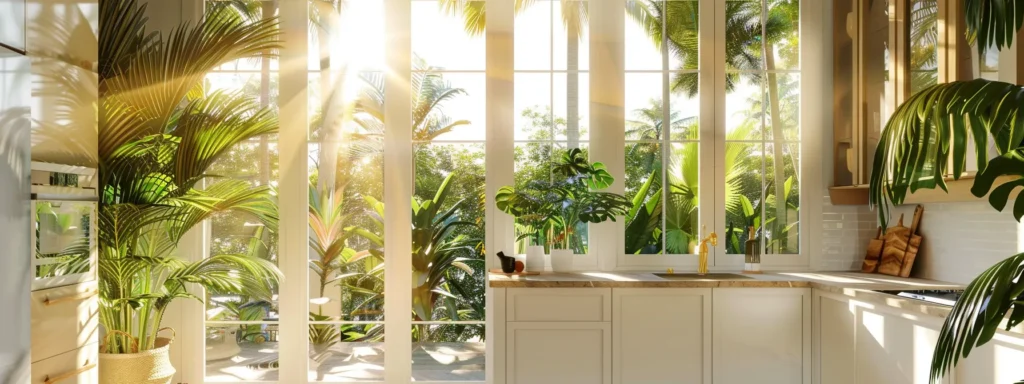
As a home inspector in Hawaii, I’ve seen how crucial preventative measures are in safeguarding Hilo homes from wood rot and moisture damage. I’ll be sharing effective strategies, including using seals and paints designed for tropical climates and choosing moisture-resistant building materials to combat indoor mold. Enhancing ventilation and embracing specific landscaping techniques keeps indoor humidity in check, especially in moisture-heavy areas like the kitchen. Maintaining these practices ensures ongoing moisture control, essential for maintaining the structural integrity and health of your home.
Applying Seals and Paints Suitable for Tropical Climates
Living and working in Hilo has taught me that implementing the right seals and paints can lead to significant improvements in preventing moisture damage. Specifically, sealants designed to resist the high humidity and torrential rains unique to tropical climates are essential. I counsel homeowners to apply these protective measures to the exterior of their homes, paying particular attention to wooden decks, window frames, and doorways, where water infiltration is most common.
Drawing from my extensive experience, the type of paint used on external woodwork makes a notable difference in moisture prevention. High-quality, water-resistant paints formulated for tropical environments act as an additional barrier, safeguarding wood from the persistent moisture that defines our island weather. These paints not only help prevent wood rot but also contribute to the longevity and aesthetic appearance of your property:
- Selecting high-grade, moisture-repelling sealants for application on exposed wood surfaces.
- Choosing paints with mold and mildew inhibitors to extend the life of wood structures.
- Applying these products in accordance with manufacturer recommendations for best results.
Improving Ventilation to Reduce Indoor Humidity
In my extensive service as a home inspector in Hilo, I’ve found that enhancing ventilation is a fundamental step in combating the pervasive humidity that can lead to wood rot. Ensuring that homes have adequate air movement reduces the accumulation of moisture, pivotal in preventing mold growth and structural damage.
Practical experience has shown me the value of exhaust fans, particularly in areas like the kitchen and bathroom where humidity levels tend to spike. Installing these devices, along with maintaining clear airways for your HVAC system, plays a crucial role in keeping indoor humidity at bay and safeguarding wooden structures from moisture damage:
| Room | Solution | Benefit |
|---|---|---|
| Kitchen | High-capacity exhaust fan | Reduces cooking-related humidity |
| Bathroom | Automated humidity-sensing fan | Controls moisture after showers |
| Living Areas | Air dehumidifiers | Maintains consistent humidity levels |
Landscaping Techniques to Divert Water Away
As a home inspector and handyman in Hilo, I advise clients on the functional design of their landscapes to prevent water damage. Grading your yard away from your home ensures that rainwater naturally flows away from the foundation, significantly reducing the potential for moisture to seep into wood structures. Choosing the correct slope for the land around your property prevents standing water, a precursor to wood rot, and protects the structural integrity of your home.
Additionally, strategically placing gutters and downspouts is critical for diverting water from your home’s exterior. In my inspections, I’ve observed that ensuring gutters are free from debris and downspouts are directing water well away from the foundation can prevent water accumulation near wooden elements. My professional experience reinforces that proper water management through thoughtful landscaping and gutter maintenance is crucial for protecting Hilo homes from moisture intrusion and subsequent wood decay.
Maintenance Practices for Ongoing Moisture Control
In my professional dealings, I emphasize the necessity of consistent maintenance to control moisture within Hilo homes. A routine schedule for cleaning gutters and inspecting roof shingles saves homeowners from unexpected repairs. I stress to my clients the importance of keeping an eye out for cracked caulk around windows and doors — resealing these areas promptly ensures that moisture does not penetrate and cause unseen damage that can escalate over time.
Having surveyed homes throughout Hilo, I’ve learned that moisture control is greatly enhanced by simply monitoring indoor humidity levels. A humidity monitor can be a homeowner’s best ally in detecting elevated moisture before it becomes a tangible problem. From my experience, maintaining indoor humidity below 60% tends to preserve wood integrity, keeping fungal growth at bay and contributing to the overall health of the home’s structure.
Selecting Moisture-Resistant Building Materials
In the verdant environment of Hilo, opting for moisture-resistant building materials is a strategic move I often recommend. For new constructions or renovations, incorporating materials like treated wood, metal framing, or composite decking can be pivotal. These choices actively resist water damage and reduce the prevalence of rot, offering longevity despite Hawaii’s consistent moisture. Through my professional guidance, homeowners find these materials a worthy investment for their properties’ structural integrity.
On the ground, I’ve seen the effectiveness of using moisture-resistant drywall, especially in areas prone to high humidity levels like bathrooms and kitchens. Cement board is another robust option for wet zones, forming a durable underlayment for flooring and wall tiles. With my hand in both inspection and repair work, I encourage clients to consider these materials as practical defenses against the pervasive challenges of maintaining a healthy and resilient home in our tropical climate.
Keeping moisture at bay is step one. Next, let’s see how thorough home inspections are your best defense against the silent invader: wood rot.
The Role of Home Inspections in Preventing Wood Rot
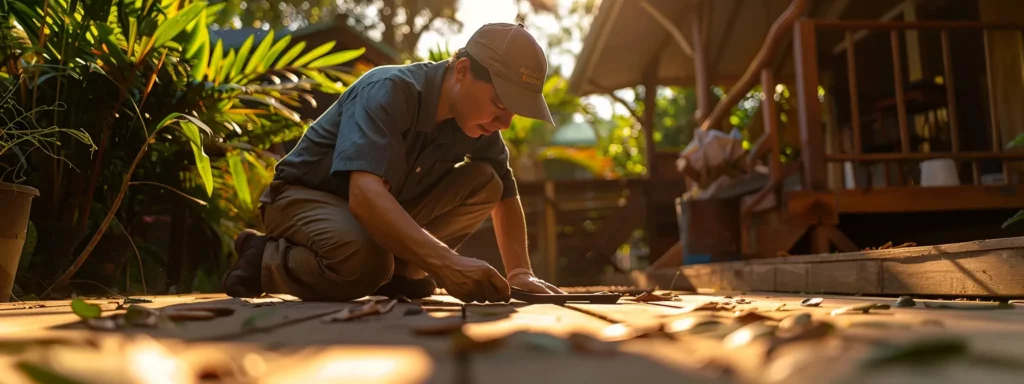
As a seasoned home inspector in Hilo, I’ve witnessed how professional inspections are critical in preventing wood rot and moisture damage in Hawaii’s unique climate. An inspection on the Big Island involves thorough evaluations, allowing us to anticipate future issues and recommend optimal scheduling for regular upkeep. To enforce this preventive approach, understanding how to choose a qualified home inspector in Hilo is paramount. The subsequent details will demonstrate the advantages of professional inspections and guide you through the critical processes that safeguard your home.
Advantages of Professional Inspections in Hawaii
As a seasoned home inspector operating in Hawaii, I’ve observed the immense benefits that professional inspections bring to homeowners in Hilo. These evaluations act as a crucial early-warning system, identifying hidden moisture and wood rot before they escalate into costly and extensive repairs. Through comprehensive assessments of your property, I provide detailed insights into preventing future damage, ensuring your home remains structurally sound and protected against the relentless tropical climate.
My in-depth inspections in Hawaii go beyond superficial checks, delving into the integrity of wooden structures and potential moisture ingress points. Engaging my expertise can pinpoint vulnerabilities in your residence that might escape the average eye, guiding effective preventative measures. This hands-on approach is key in safeguarding Hilo homes from the pervasive threat of wood rot and moisture-related issues, presenting a clear advantage in maintaining the longevity and safety of your investment.
What a Big Island Home Inspection Involves
A home inspection on the Big Island entails a meticulous review of a property, specifically geared towards identifying moisture-related issues that contribute to wood rot—a common problem in our humid climate. As a professional home inspector in Hilo, I meticulously examine key areas susceptible to water intrusion, such as roofing, plumbing, and the structural integrity of wood framing, all pivotal factors in maintaining a home’s health and longevity.
Conducting these inspections, I draw upon my extensive expertise to pinpoint precise locations where moisture may gather and compromise structural materials. My evaluations focus on areas like window and door frames, basements, crawl spaces, and attics, all of which are vulnerable to Hawaii’s tropical elements. The goal is to provide homeowners with actionable recommendations, enabling them to address minor concerns before they escalate into more significant, cost-intensive damage.
Using Inspections to Anticipate Future Issues
In my professional capacity, I conduct home inspections to not only assess current conditions but also to foresee potential future issues. This proactive approach allows Hilo homeowners to address concerns before they escalate, ensuring their homes remain protected against wood rot and moisture damage. Anticipating problems like foundation shifts that could lead to water infiltration or identifying aging sealants poised to fail, I guide homeowners toward preemptive maintenance, thereby extending the lifespan of their properties.
One of the most effective tactics I’ve used during inspections is to provide homeowners with a tailored maintenance schedule. This plan includes critical checks and balances like regular gutter cleaning, roof inspections, and ensuring proper drainage, all geared towards mitigating moisture-related problems. When such preemptive steps are taken, the likelihood of unexpected, costly repairs drops significantly:
- Periodic gutter cleaning to prevent blockages that can lead to water overflow against wooden structures.
- Meticulous roof inspections, particularly after heavy rains, to ensure shingles and flashing are intact and preventing water entry.
- Regular evaluation of the property’s slope and drainage to divert water away from the foundation, preserving wood integrity.
Optimal Scheduling for Regular Inspections
Timely scheduling of regular inspections is paramount in preventing wood rot and moisture damage in Hilo’s unique climate. From my extensive experience, I recommend semi-annual inspections, coinciding with the wet and dry seasons of our island environment, to effectively gauge how weather patterns affect your home’s wood structures. Align your inspections with these critical periods to catch any moisture-related issues before they exacerbate, ensuring your home’s resilience.
To crystallize this routine, I’ve compiled a practical timetable that outlines the best times to plan these essential check-ups:
| Season | Home Component | Inspection Focus |
|---|---|---|
| Wet (November – March) | Roof, Gutters, and Downspouts | Water Leakage and Proper Drainage |
| Dry (May – September) | Foundation and Landscaping | Ground Moisture and Water Diversion |
| Year-Round | Interior Spaces (especially basements and attics) | Humidity Levels and Ventilation Effectiveness |
By adhering to this table, homeowners in Hilo can maintain a systematic inspection schedule, which directly contributes to the safeguarding of their property against damage. In my professional role, I’ve helped countless clients navigate and implement this schedule—ensuring that potential issues like wood rot and moisture penetration are identified early and managed effectively for the longevity and safety of their homes.
How to Choose a Qualified Home Inspector in Hilo
Choosing the right home inspector in Hilo is a critical decision that can significantly impact the long-term health and safety of your property. Look for a licensed professional with extensive knowledge of Hawaii’s unique climate challenges, especially in wood rot and moisture intrusion. It’s essential to select an inspector who not only has the credentials but also comes recommended for their meticulous attention to detail and commitment to providing actionable insights for preventing future damage.
In my experience, the expertise of a qualified home inspector is invaluable when it comes to identifying the early signs of wood decay and moisture issues. Ensure that the inspector you choose possesses a strong track record of diagnosing and offering practical solutions to these problems. Their ability to articulate complex issues clearly and guide homeowners through necessary maintenance or repair strategies is a crucial factor that distinguishes a true professional in the field of home inspections in Hilo.
Wood rot lurks, silent and destructive, waiting to undermine your home’s integrity. Let’s hear how a seasoned inspector halts its spread and saves your sanctuary.
Expert Advice From a Professional Home Inspector
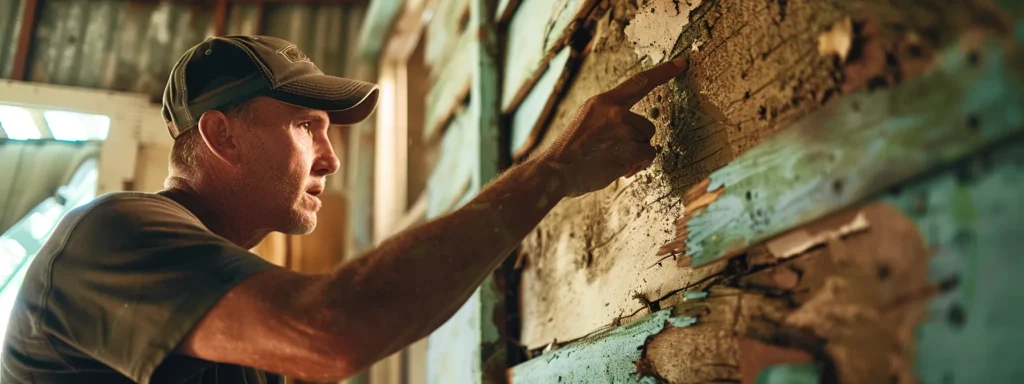
As a seasoned Hilo home inspector, I understand the necessity of proactive measures to protect your home from the pervasive threats of wood rot and moisture. Within this guide, I’ll share actionable steps for effective preventative maintenance, steer you clear of common mistakes in wood care, and highlight economical solutions to moisture issues. Plus, I’ll tap into my pool of local knowledge and services, offering anecdotes from my Hawaii home inspections that underscore the value of these strategies for any homeowner.
Proactive Steps to Safeguard Your Home
As a dedicated home inspector in Hilo, I have gleaned that the best defense against wood rot and moisture damage starts with proactive maintenance. Ensuring your home’s exterior is painted with high-quality, water-resistant paints and sealed properly at joints and corners can thwart moisture penetration, foundational in preventing the onset of rot.
From my extensive fieldwork, I’ve learned that regular inspection of roofing and plumbing systems is critical for early detection of potential issues. For homeowners, addressing repairs swiftly, especially after severe weather events, is instrumental in averting the escalation of water damage and safeguarding their homes against the pervasive threat of rot.
Avoiding Common Pitfalls With Wood Maintenance
In my years of service, I’ve observed that neglecting regular wood maintenance is a frequent misstep for homeowners in Hilo, leading to extensive wood rot and moisture damage. It’s crucial to remember that while wood is a sturdy material, it requires periodic attention, such as resealing and repainting, to protect against Hilo’s high humidity and rainfall. By keeping up with these simple tasks, you can significantly enhance the resilience of wood surfaces against the elements.
One particularly avoidable pitfall is ignoring early signs of moisture damage, such as discoloration or mold growth on wooden surfaces. In my experience, taking immediate action at the first hint of trouble often means the difference between a minor fix and a major renovation. I consistently advise homeowners to conduct visual checks periodically and to reach out to a professional when in doubt, ensuring that small issues don’t spiral into bigger, more expensive ones.
Affordable Solutions to Address Moisture Concerns
Addressing moisture concerns doesn’t necessarily involve costly overhauls; simple, affordable strategies can effectively safeguard against wood rot. I frequently recommend regular cleaning of gutters and downspouts as a cost-effective measure. This routine act prevents water accumulation near foundational wood structures and is a relatively easy task that homeowners can take on themselves or outsource inexpensively.
Another accessible solution I advise is the strategic use of landscaping to improve drainage around the home: Consider planting native vegetation that requires less watering, or use gravel and proper grading to direct water away from the structure. Here’s a table that articulates these cost-effective methods and their respective benefits:
| Method | Action | Benefit |
|---|---|---|
| Gutter Maintenance | Clean quarterly, repair if necessary | Redirects rainwater, prevents overflow |
| Landscaping | Plant drought-tolerant species, grade soil | Reduces ground water near foundation |
Finally, deploying moisture barriers like quality vapor retarders in crawlspaces is an investment with high returns compared to the cost of extensive wood damage repairs. With the right guidance and materials, preventing moisture intrusion upfront can prove to be a wise and economical choice for homeowners in Hilo.
Leveraging Local Expertise and Services
In my extensive journey helping Hawaii residents maintain their homes, I’ve consistently emphasized the importance of leveraging local expertise and services. Hilo, with its unique climate, has specialists who understand the intricacies of preventing moisture damage and wood rot. By consulting professionals who are deeply familiar with the regional challenges, homeowners receive tailored advice and solutions that are more effective than generalized guidance.
My collaborations with other Hilo service providers have reinforced the value of local knowledge in addressing moisture issues. For instance, local contractors have a wealth of experience in choosing the right materials and construction techniques best suited for our tropical climate. By engaging with experts who have a track record of success in our community, homeowners ensure the longevity of their investments and protect their properties against the pervasive threats of humidity and rainfall in Hilo.
Real-Life Examples From Home Inspection Hawaii
During a recent comprehensive inspection of a historic Hilo home, I uncovered extensive wood rot in the structural beams of the lanai, a common leisure feature in local properties. This issue, initially invisible to the residents, was a result of prolonged moisture exposure combined with inadequate ventilation. My timely intervention and detailed report enabled the homeowners to undertake corrective renovations, reinforcing the importance of professional evaluations in our humid climate.
In another instance, a client reached out with concerns about a persistent musty odor in their newly purchased plantation-style residence. My thorough investigation identified a concealed area of dampness within the wall cavities, fostered by improper grading that directed rainwater toward the house. The subsequent remediation not only resolved the moisture issue but also preserved the integrity of the home’s cherished woodwork, highlighting how local expertise and vigilant inspection practices are essential in maintaining the health of Hilo properties.
Wood can betray a home’s strength, hidden decay gnawing at its bones. Let us arm you with knowledge to repair and renew, ensuring your sanctuary stands resilient.
Repairing and Replacing Damaged Wood in Your Home
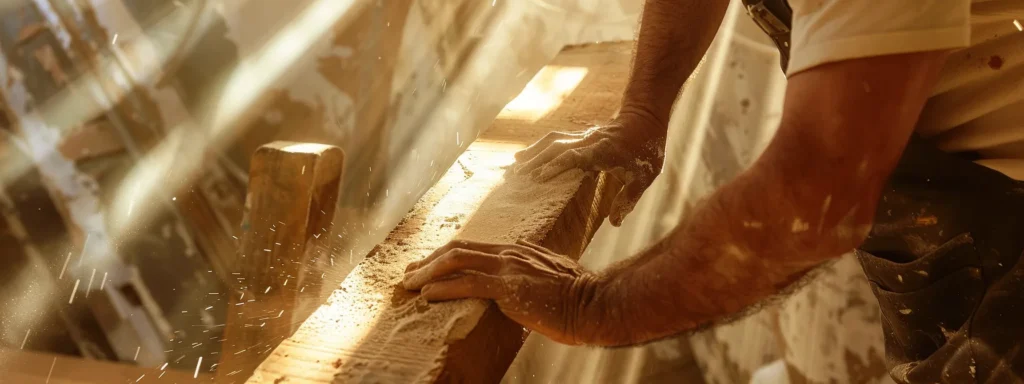
In my day-to-day as a Hilo home inspector, addressing the aftermath of wood rot is as crucial as prevention. This section delves into how to evaluate the severity of the damage, decisions on DIY versus professional repair, reinforcing preventive measures post-restoration, crafting a budget for repairs and replacements, and crafting a long-term plan to protect your investment against the humid Hawaiian climate.
Evaluating the Severity of Wood Rot
Assessing the severity of wood rot is a critical step in my home inspection processes, and it’s one that homeowners should approach with a strategic focus. I look for signs such as the extent of discoloration, any structural deformation, and how deeply the wood yields to pressure. These factors help determine whether repair or replacement is necessary for the affected wood, providing clear guidance on the next steps to safeguard the property against further damage.
When detecting rot, I emphasize the difference between superficial damage—which can sometimes be remedied with simple treatments—and severe decay which compromises structural integrity. For example, if a support beam in your crawl space has sustained serious rot, the stability of your entire home could be at risk. In such cases, the following actions should be prioritized:
- Immediate consultation with a structural engineer or qualified contractor.
- Development of a repair or replacement plan to address the compromised wood.
- Swift execution of the plan to restore safety and integrity to your home.
Deciding Between DIY and Professional Repairs
Deciding between tackling wood repairs yourself or hiring professionals comes down to assessing the complexity of the damage and your own skill level. For minor issues, such as a small area of wood rot that hasn’t affected the structural integrity, a DIY approach with the proper tools and materials can be a cost-effective solution. At Ash the Handyman LLC, I’ve witnessed many resourceful homeowners successfully manage minor repairs, enhancing their homes’ longevity and learning valuable maintenance skills along the way.
However, when facing extensive damage or structural concerns, professional repairs are the safest bet. As someone who has been in the trenches of home inspection and repair, I can attest to the risks associated with delaying or incorrectly repairing significant wood rot. Professionals have the expertise to navigate building codes, select appropriate materials, and execute repairs that ensure your home’s safety and durability. Here’s a basic guideline to help you determine whether to DIY or call in the experts:
| Extent of Damage | DIY or Professional | Considerations |
|---|---|---|
| Minor wood rot | DIY | Level of DIY skill, type of wood affected, location of rot |
| Extensive or structural damage | Professional | Building codes, structural safety, long-term reliability |
Preventative Measures After Restoration
After restoring areas damaged by wood rot in your Hilo home, implementing preventative measures is critical to hinder future occurrences. As a skilled home inspector, I’ve come to recognize that diligent maintenance and routine checks are pivotal in this prevention. Applying water-resistant sealants and finishes to freshly repaired or replaced wood surfaces guards against the humid climate of our island, preserving your efforts in restoration.
To ensure the longevity of your repairs and the continued structural health of your home, routine inspection schedules must be established: This tailored approach allows for the early detection of potential moisture problems, nipping them in the bud before they become costly issues. In my practice, I advise homeowners to consider the following inspection intervals and focus points to maintain their wood structures in optimal condition:
| Frequency | Inspection Focus |
|---|---|
| Monthly | Check sealants and finishes for cracks or peeling |
| Bi-annual | Professional inspection of vulnerable areas for moisture intrusion |
| Annual | Comprehensive review of all exterior wood structures |
Budgeting for Repair and Replacement Costs
As a knowledgeable home inspector, I’ve advised numerous Hilo homeowners on the importance of anticipating and budgeting for wood repair and replacement costs. An essential part of safeguarding your property, this financial planning encompasses not only the direct costs of materials and labor but also any ancillary costs such as temporary accommodations or the loss of rental income during repairs. By setting aside a contingency fund, you’re better prepared to address these unplanned expenses promptly, maintaining your property’s value and avoiding the stress of last-minute financial scrambling.
My experience reveals that understanding local construction rates and material costs can dramatically influence your budgeting accuracy. I always recommend gathering multiple quotes from reputable contractors to form a well-informed budget plan that reflects current market conditions in Hilo. This proactive measure allows you to align your financial expectations with reality and provides peace of mind, knowing you have allocated sufficient funds to handle the inevitable wear and tear on your wood structures in our humid Hawaiian climate.
Long-Term Plans for Protecting Your Investment
Creating a long-term plan to protect your Hilo home from moisture damage and wood rot is fundamental to preserving your real estate investment. One effective strategy I employ is recommending the periodic application of waterproofing treatments to wood surfaces, particularly those exposed to the elements. Additionally, advising clients to upgrade or repair roofing and plumbing systems can prevent water intrusion that often leads to costly wood decay issues.
Another crucial component of protecting your home investment is the implementation of a sustainable maintenance program. This includes regular inspections and timely repairs that address any minor issues before they worsen. Strategies such as proper landscaping to facilitate water runoff and installing gutters and downspouts effectively can play a significant role in preventing moisture buildup and safeguarding wood structures against rot:
| Maintenance Action | Frequency | Impact |
|---|---|---|
| Waterproofing Treatments | Every 2-3 years | Prevents wood from absorbing moisture |
| Roof and Plumbing Upgrades | As needed or every 5-10 years | Reduces potential for leaks and water damage |
| Landscaping and Water Runoff Management | Annually | Ensures proper water diversion away from the home |
Frequently Asked Questions
How does Hilo's climate contribute to wood rot?
Hilo’s humid climate escalates wood rot, where persistent rainfall and high humidity foster rapid fungal growth, degrading timber structures in homes.
What are the early signs of wood rot in homes?
Early signs of wood rot include soft or discolored timber, a musty odor, and the presence of fungus—all indicators that warrant a professional home inspection.
Can regular home inspections prevent wood rot issues?
Yes, routine home inspections are pivotal in detecting early signs of wood rot, enabling timely repairs and preventing extensive structural damage.
What strategies are effective in preventing moisture damage?
To prevent moisture damage, ensure proper ventilation, use moisture-resistant materials during construction, and regularly inspect and maintain gutters and downspouts.
When should damaged wood be repaired or replaced?
Damaged wood should be repaired or replaced promptly when it shows signs of rot, structural weakness, or extensive termite damage, to maintain your home’s integrity and safety.
Conclusion
Effectively safeguarding Hilo homes from wood rot and moisture damage is vital to protecting both the property’s structural integrity and owner investment. Regular inspections and timely intervention are key, enabling early detection and prevention of potentially costly and extensive wood decay. Implementing practical steps, such as using moisture-resistant materials and ensuring proper ventilation, can provide long-term defense against Hawaii’s humid climate. Ultimately, homeowners empowered with this professional guidance can maintain the health and longevity of their homes, ensuring peace of mind in a challenging environment.


No Comments